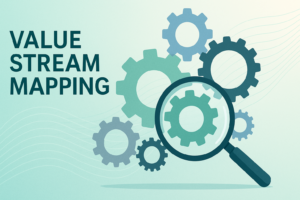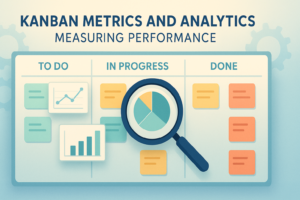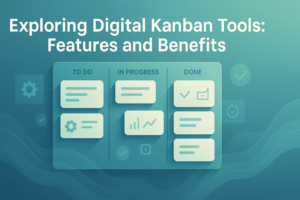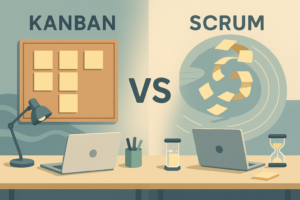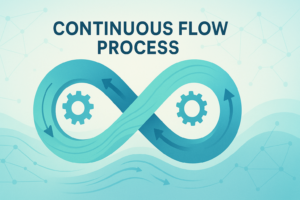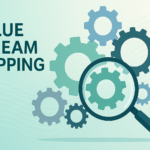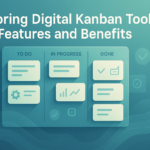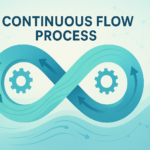Scrum Framework Fundamentals: A Beginner’s Guide
In the rapidly evolving world of software development, methodologies that enhance productivity and efficiency are crucial. One such methodology that has gained immense popularity is Scrum. Designed to help teams deliver products of the highest possible value, Scrum is a framework that promotes collaboration, accountability, and iterative progress. Whether you are a beginner stepping into the agile world or a professional seeking to refine your understanding, this guide will walk you through the fundamentals of the Scrum framework.
What is Scrum?
Scrum is a subset of Agile, a methodology that advocates adaptive planning, evolutionary development, early delivery, and continual improvement, all with an emphasis on flexible responses to change. The Scrum framework is characterized by a set of roles, events, and artifacts that aid teams in structuring and managing their work.
According to the Scrum Alliance, organizations using Scrum have reported a 60% reduction in time-to-market and a 25% increase in productivity. Such statistics underscore the value Scrum can bring to an organization when implemented effectively.
The Key Roles in Scrum
Scrum Master
The Scrum Master is the facilitator of the Scrum process. They ensure that the team adheres to Scrum principles and practices, helping to remove any impediments that may hinder the team’s progress. The Scrum Master is not a project manager in the traditional sense but acts as a coach to the team.
Product Owner
The Product Owner is responsible for maximizing the value of the product resulting from the work of the Scrum Team. They manage the Product Backlog, ensuring it is visible, transparent, and clearly understood. The Product Owner prioritizes work based on business value, user needs, and market trends.
Development Team
The Development Team consists of professionals who work together to deliver a potentially shippable product increment at the end of each Sprint. The team is self-organizing, meaning they decide how to accomplish the work set forth by the Product Owner.
Scrum Events
Sprint
A Sprint is the heartbeat of Scrum, a time-boxed period (usually 2-4 weeks) during which a “Done”, usable, and potentially releasable product increment is created. Sprints have consistent durations throughout a development effort, and a new Sprint starts immediately after the conclusion of the previous one.
Sprint Planning
During Sprint Planning, the Scrum Team comes together to define the Sprint Goal, which is what they aim to achieve during the Sprint. The team selects items from the Product Backlog to work on during the Sprint, creating a Sprint Backlog in the process.
Daily Scrum
The Daily Scrum is a short, 15-minute meeting held every day of the Sprint. The purpose is for the Development Team to synchronize their activities and create a plan for the next 24 hours. They discuss what was done, what will be done, and any obstacles faced.
Sprint Review
At the end of each Sprint, a Sprint Review is conducted to inspect the increment and adapt the Product Backlog if needed. This event is an opportunity for the Scrum Team and stakeholders to collaborate and review the work that was completed and what was not.
Sprint Retrospective
The Sprint Retrospective is an opportunity for the Scrum Team to inspect itself and create a plan for improvements to be enacted during the next Sprint. It follows the Sprint Review and precedes the next Sprint Planning.
Scrum Artifacts
Product Backlog
The Product Backlog is an ordered list of everything that is known to be needed in the product. It is the single source of requirements for any changes to be made to the product. The Product Owner is responsible for the Product Backlog, including its content, availability, and ordering.
Sprint Backlog
The Sprint Backlog is the set of Product Backlog items selected for the Sprint, plus a plan for delivering the product Increment and realizing the Sprint Goal. The Sprint Backlog is a forecast by the Development Team about what functionality will be in the next Increment and the work needed to deliver that functionality.
Increment
An Increment is the sum of all the Product Backlog items completed during a Sprint and the value of all the increments that have been done previously. At the end of a Sprint, the new Increment must be “Done”, which means it must be in a usable condition and meet the Scrum Team’s definition of “Done”.
Benefits of Using the Scrum Framework
Scrum offers numerous benefits that make it a preferred methodology for many organizations. Some of the key advantages include:
- Flexibility and Adaptability: Scrum’s iterative nature allows teams to adapt to changes quickly, ensuring that the final product aligns with user needs and market demands.
- Improved Collaboration: The roles and events in Scrum foster strong collaboration among team members and stakeholders, leading to better communication and problem-solving.
- Increased Productivity: By breaking down tasks into manageable Sprints, teams can focus on delivering high-quality increments, which boosts overall productivity.
- Faster Time-to-Market: The incremental delivery approach ensures that valuable features are released faster, giving organizations a competitive edge.
Common Challenges and Solutions in Scrum
While Scrum offers many benefits, it is not without its challenges. Here are some common issues teams face and potential solutions:
Resistance to Change
Teams may resist adopting Scrum due to a fear of change or misunderstanding its benefits. To overcome this, organizations should invest in training and workshops to educate teams about the advantages of Scrum and how it can improve their workflow.
Lack of Experience with Scrum
New teams may struggle with implementing Scrum due to a lack of experience. Pairing inexperienced teams with seasoned Scrum practitioners can help mentor them through the process, ensuring a smoother transition.
Inadequate Communication
Effective communication is crucial in Scrum. Teams should leverage tools like Slack, Microsoft Teams, or Jira to facilitate communication and track progress. Regular feedback loops through events like Daily Scrums and Sprint Reviews can also enhance transparency and understanding.
Actionable Tips for Implementing Scrum
Here are some actionable tips to help you successfully implement Scrum in your organization:
- Start with a Pilot Project: Implementing Scrum in a smaller, less critical project can help teams learn and adapt the framework before scaling it organization-wide.
- Encourage Continuous Learning: Promote a culture of continuous improvement by encouraging team members to attend Scrum workshops, webinars, and conferences.
- Define Clear Roles and Responsibilities: Ensure that everyone understands their roles within the Scrum Team to prevent overlap and confusion.
- Leverage Scrum Tools: Utilize Scrum-specific tools like Trello, Asana, or Jira to streamline task management and facilitate better collaboration.
Conclusion
Embracing the Scrum framework can transform how your team approaches project management, leading to more effective collaboration, faster delivery, and higher-quality products. By understanding the core roles, events, and artifacts, and implementing the actionable tips discussed, you can navigate the challenges of Scrum and harness its full potential. Whether you are just beginning your Scrum journey or looking to refine your approach, the key is to stay committed to the principles of Agile and continuously seek improvement. With dedication and practice, Scrum can become a powerful tool in your project management arsenal.



